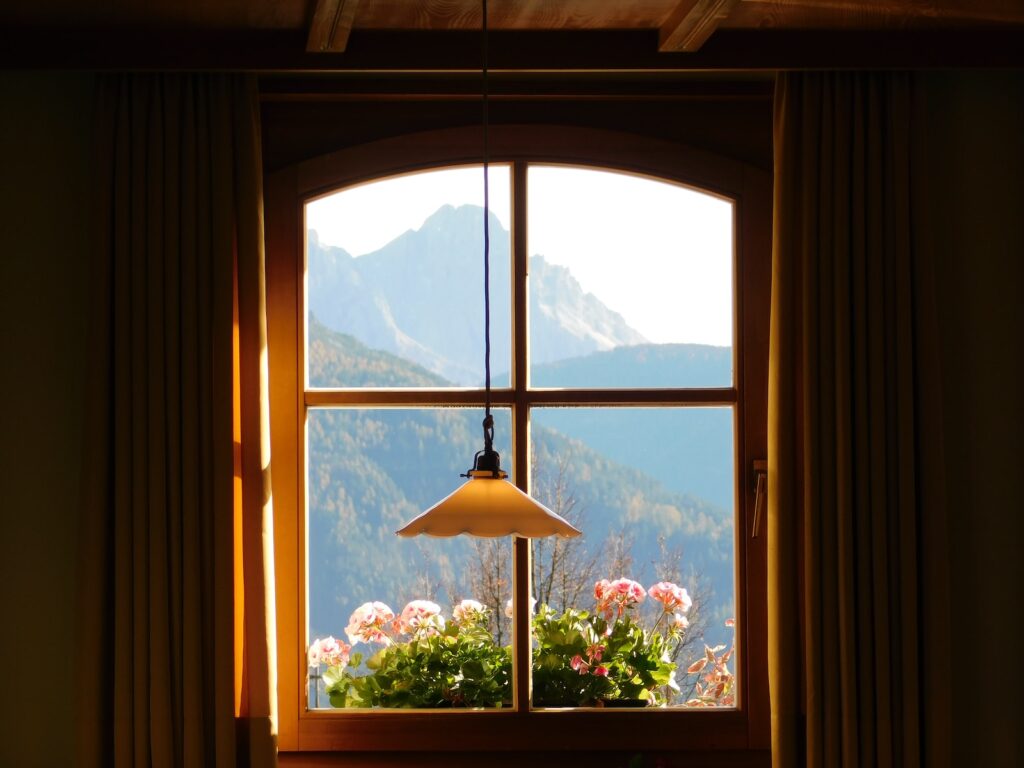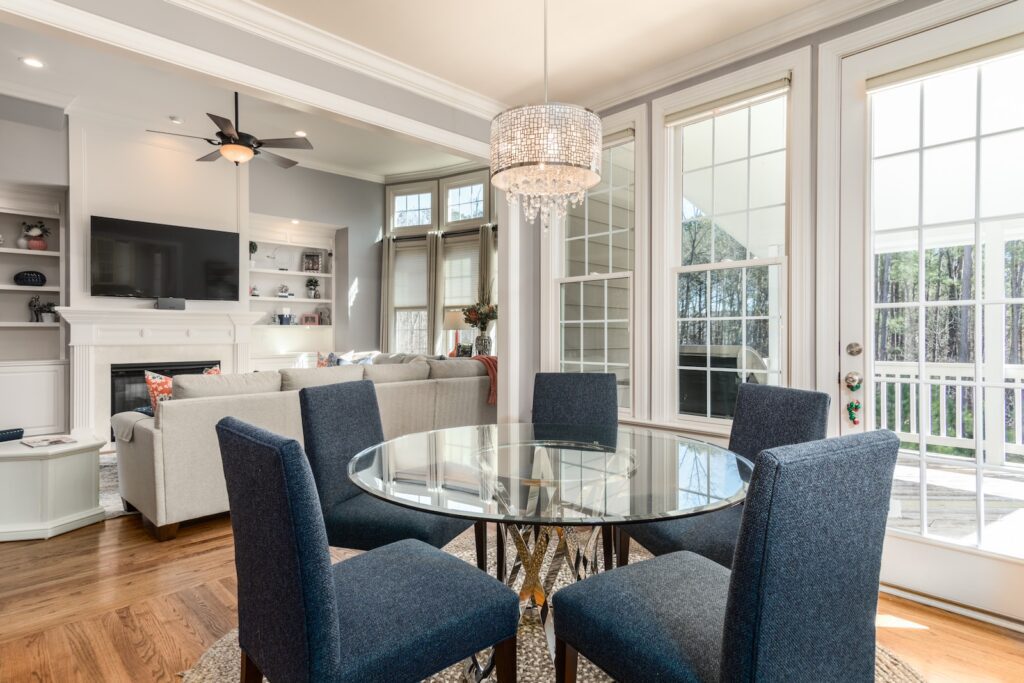Have you ever wondered what that decorative border around your window is called? You’re not alone! Many people are unsure of the proper term for this feature. Fortunately, we’re here to clear up any confusion and provide you with the answer you’re looking for.
The framing around a window is called a window casing or window trim. It serves both a practical and aesthetic purpose, providing a finished look to your window while also protecting the surrounding wall from damage. Let’s explore this feature in more detail and discover the various types of window casings available.

What Is the Framing Around a Window Called?
When you’re looking at a window, you’ll notice that there are a few different parts that make up the overall design. There are the window panes themselves, the sashes that hold them in place, and the frame that surrounds the entire unit. But what is the framing around a window called? In the construction industry, it’s commonly referred to as the window trim.
What is Window Trim?
Window trim is the decorative finishing that’s added around the exterior of a window. It’s often made from wood, PVC, or composite materials, and it serves a few different purposes. First and foremost, window trim helps to create a clean, finished look around the window opening. It masks any gaps or rough edges that might be present and gives the window a more polished appearance.
The Benefits of Window Trim:
- Enhances the overall design of a window, making it more visually appealing.
- Helps to protect the window from moisture and weather damage.
- Can improve the energy efficiency of a window by reducing air leaks.
- Provides a surface for paint or stain, allowing homeowners to customize the look of their windows.
Types of Window Trim:
There are several different types of window trim that you can choose from, depending on your budget, style preferences, and maintenance requirements. Some of the most common options include:
| Type of Trim | Material | Pros | Cons |
|---|---|---|---|
| Casing | Wood, PVC, or composite materials | Easy to install, versatile design options, low maintenance | Can be susceptible to rot or moisture damage if not properly sealed |
| Crown Molding | Wood or plaster | Creates an elegant, upscale look, adds depth to the window design | More difficult to install, may require professional installation, can be expensive |
| Sill Apron | Wood or composite materials | Helps to protect the window sill from moisture damage, creates a finished look at the bottom of the window | May require more frequent maintenance, can be difficult to install on certain types of windows |
Window Trim vs. Window Casing
While window trim and window casing are often used interchangeably, there are some differences between the two. Window casing refers specifically to the moulding or frame that surrounds the window opening, while window trim is the decorative finishing that’s added on top of the casing. In other words, window casing is the structural element that holds the window in place, while window trim is the finishing touch that makes the window look complete.
The Pros and Cons of Window Casing:
- Provides structural support to the window, ensuring that it stays securely in place.
- Can help to reduce air infiltration and improve energy efficiency.
- May require more maintenance over time, as it can be susceptible to moisture damage or rot.
The Pros and Cons of Window Trim:
- Adds a decorative element to the window, enhancing its overall appearance.
- Helps to protect the window from moisture damage and weathering.
- May need to be repainted or refinished over time to maintain its appearance.
Conclusion
In summary, the framing around a window is commonly referred to as window trim. This decorative finishing serves to enhance the overall appearance of the window, protect it from weather damage, and improve its energy efficiency. There are several different types of window trim and casing to choose from, each with its own set of pros and cons. By understanding the differences between them, you can make an informed decision about which option is right for your needs.
Frequently Asked Questions
What is the purpose of window framing?
Window framing serves as a support system for the window and helps to keep it in place. It also provides a barrier against air, water, and noise infiltration. In addition, the framing can enhance the aesthetic appeal of the window and the overall design of the building.
There are different materials used for window framing, including wood, vinyl, aluminum, and fiberglass. Each material has its own advantages and disadvantages, and the choice depends on various factors such as cost, durability, and design preferences.
What are the different types of window frames?
There are several types of window frames, including wooden frames, vinyl frames, aluminum frames, and fiberglass frames. Wooden frames offer a classic look and are popular for traditional and historic homes. Vinyl frames are low maintenance and energy-efficient, making them a popular choice for modern homes. Aluminum frames are durable and strong, making them ideal for large windows and commercial buildings. Fiberglass frames are lightweight and strong, and they offer good insulation and low maintenance.
The choice of window frame depends on various factors such as the style of the home, the climate in the area, and the budget for the project.
What is the difference between window framing and window trim?
Window framing refers to the structural support system that surrounds the window and holds it in place. It is usually made of wood, vinyl, aluminum, or fiberglass. Window trim, on the other hand, is a decorative element that is added to the framing to enhance its aesthetic appeal.
Window trim can be made of various materials such as wood, PVC, or composite materials. It can be painted or stained to match the color of the framing or the overall design of the building. Window trim can also be used to cover gaps between the framing and the wall, or to hide unsightly elements such as caulking or nails.
Can window framing be replaced?
Yes, window framing can be replaced if it is damaged or deteriorated. The replacement process involves removing the existing framing and installing new framing. The new framing should be compatible with the type of window and the design of the building. It is important to hire a professional contractor to perform the replacement, as it requires specialized knowledge and tools.
In some cases, window framing can be repaired instead of replaced. This depends on the extent of the damage and the condition of the framing. A professional contractor can assess the situation and recommend the best course of action.
What is the cost of window framing?
The cost of window framing depends on various factors such as the size of the window, the type of material used, and the complexity of the design. On average, the cost of window framing can range from $100 to $500 per window. Wooden frames are generally more expensive than vinyl or aluminum frames, while fiberglass frames are the most expensive.
The cost of window framing does not include the cost of installation, which can vary depending on the contractor and the location. It is important to obtain multiple quotes from different contractors to ensure that you get a fair price for the project.
Learn how to frame a window ~ Building tutorials made easy
In conclusion, the framing around a window is known as a window frame. It serves as a vital component of the window, providing support for the glass, insulation, and other crucial elements. Additionally, window frames come in various materials, including wood, vinyl, aluminum, and fiberglass, each with its unique set of advantages and disadvantages.
Understanding the different types of window frames and their features is crucial when it comes to selecting the right one for your home. A well-chosen window frame can enhance the beauty of your home’s interior and exterior while providing energy efficiency and security.
In summary, whether you are building a new home or replacing your old windows, selecting the right window frame is crucial. With a little research and consideration, you can find the perfect window frame for your needs, giving your home a beautiful and functional upgrade.


